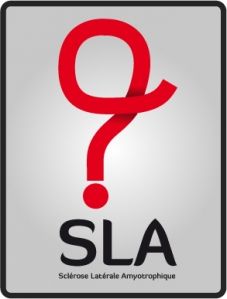Recherche SLA
Recherche SLA
 ALS-linked mutant SOD1 damages mitochondria by promoting conformational changes in Bcl-2.
ALS-linked mutant SOD1 damages mitochondria by promoting conformational changes in Bcl-2.
Frances and Joseph Weinberg Unit for ALS Research, Farber Institute for Neurosciences, Department of Neuroscience, Thomas Jefferson University, Philadelphia, PA 19107, USA.
In mutant superoxide dismutase (SOD1)-linked amyotrophic lateral sclerosis (ALS), accumulation of misfolded mutant SOD1 in spinal cord mitochondria is thought to cause mitochondrial dysfunction. Whether mutant SOD1 is toxic per se or whether it damages the mitochondria through interactions with other mitochondrial proteins is not known. We previously identified Bcl-2 as an interacting partner of mutant SOD1 specifically in spinal cord, but not in liver, mitochondria of SOD1 mice and patients. We now show that mutant SOD1 toxicity relies on this interaction. Mutant SOD1 induces mitochondrial morphological changes and compromises mitochondrial membrane integrity leading to release of Cytochrome C only in the presence of Bcl-2. In cells, mouse and human spinal cord with SOD1 mutations, the binding to mutant SOD1 triggers a conformational change in Bcl-2 that results in the uncovering of its toxic BH3 domain and conversion of Bcl-2 into a toxic protein. Bcl-2 carrying a mutagenized, non-toxic BH3 domain fails to support mutant SOD1 mitochondrial toxicity. The identification of Bcl-2 as a specific target and active partner in mutant SOD1 mitochondrial toxicity suggests new therapeutic strategies to inhibit the formation of the toxic mutant SOD1/Bcl-2 complex and to prevent mitochondrial damage in ALS.
![]()
SLA liés aux mitochondries mutantes SOD1 dommages-intérêts par la promotion de changements conformationnels de Bcl-2 .
Frances et l'unité Weinberg Joseph pour la recherche de la SLA Institut Farber , des neurosciences, Département des neurosciences, de l'Université Thomas Jefferson, Philadelphie , PA 19107, USA.
En mutant superoxyde dismutase ( SOD1 )- liée sclérose latérale amyotrophique ( SLA ) , l'accumulation de mal repliées SOD1 mutante dans les mitochondries de la moelle épinière est pensé pour causer un dysfonctionnement mitochondrial . Que la SOD1 mutante est toxique en soi ou si elle porte préjudice à l' mitochondries par des interactions avec d'autres protéines mitochondriales n'est pas connue. Nous avons précédemment identifié Bcl-2 en tant que partenaire d'interaction de la SOD1 mutante particulièrement dans la moelle épinière , mais pas dans le foie , les mitochondries de souris SOD1 et les patients . Nous allons montrer que la toxicité mutant SOD1 repose sur cette interaction . SOD1 mutante induit des changements morphologiques des mitochondries et des compromis intégrité de la membrane mitochondriale menant à la libération du cytochrome C que dans la présence de Bcl-2 . Dans les cellules , la souris et l'homme de la moelle épinière avec mutations SOD1 , la liaison à la SOD1 mutante déclenche un changement de conformation de Bcl-2 qui se traduit par la découverte de son domaine BH3 toxiques et la conversion de Bcl -2 dans une protéine toxique . Bcl-2 portant une mutagenèse , non - toxiques domaine BH3 ne parvient pas à soutenir mutant SOD1 la toxicité mitochondriale . L'identification de Bcl -2 comme une cible spécifique et un partenaire actif dans le mutant SOD1 toxicité mitochondriale suggère de nouvelles stratégies thérapeutiques pour inhiber la formation du complexe SOD1/Bcl-2 mutant toxiques et à prévenir les dommages mitochondrial dans la SLA.
Source : http://www.ncbi.nlm.nih.gov/pubmed

/https%3A%2F%2Fprofilepics.canalblog.com%2Fprofilepics%2F1%2F3%2F138481.jpg)


/https%3A%2F%2Fassets.over-blog.com%2Ft%2Fcedistic%2Fcamera.png)
/http%3A%2F%2Ffibromyalgies.fr%2Fwp-content%2Fuploads%2F2014%2F03%2F168451_1705517514459_967890_n.jpg)